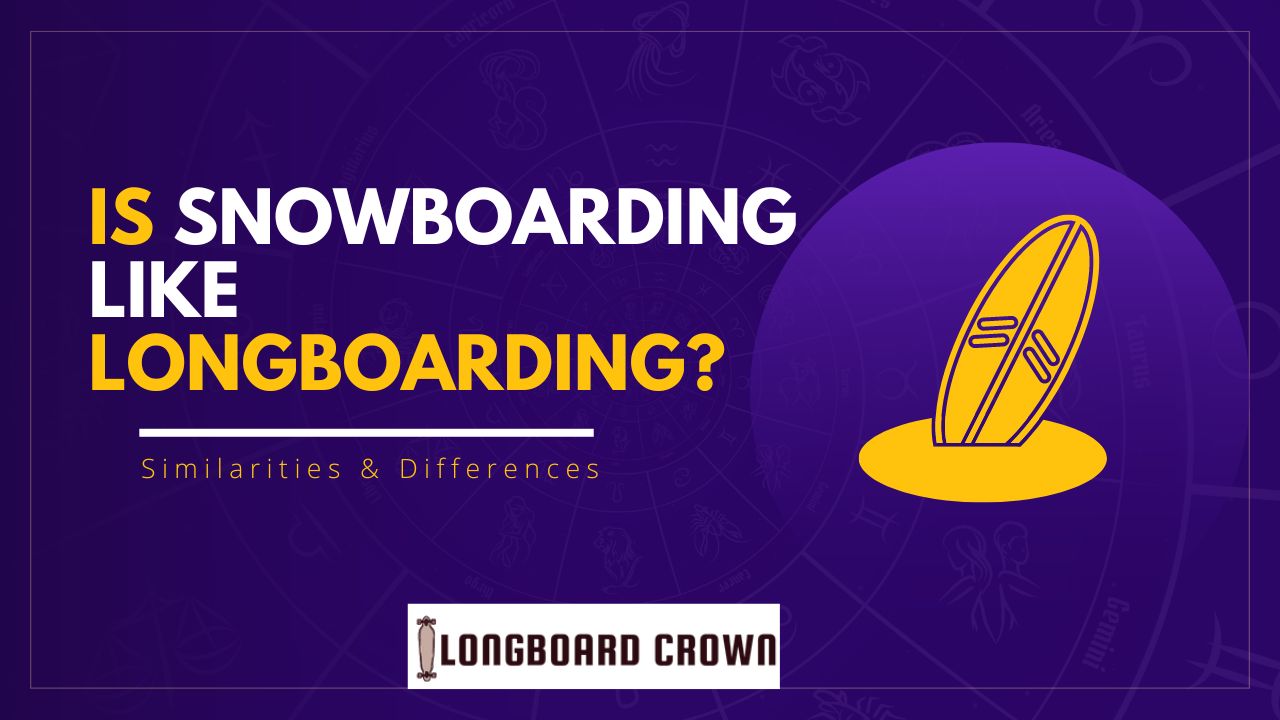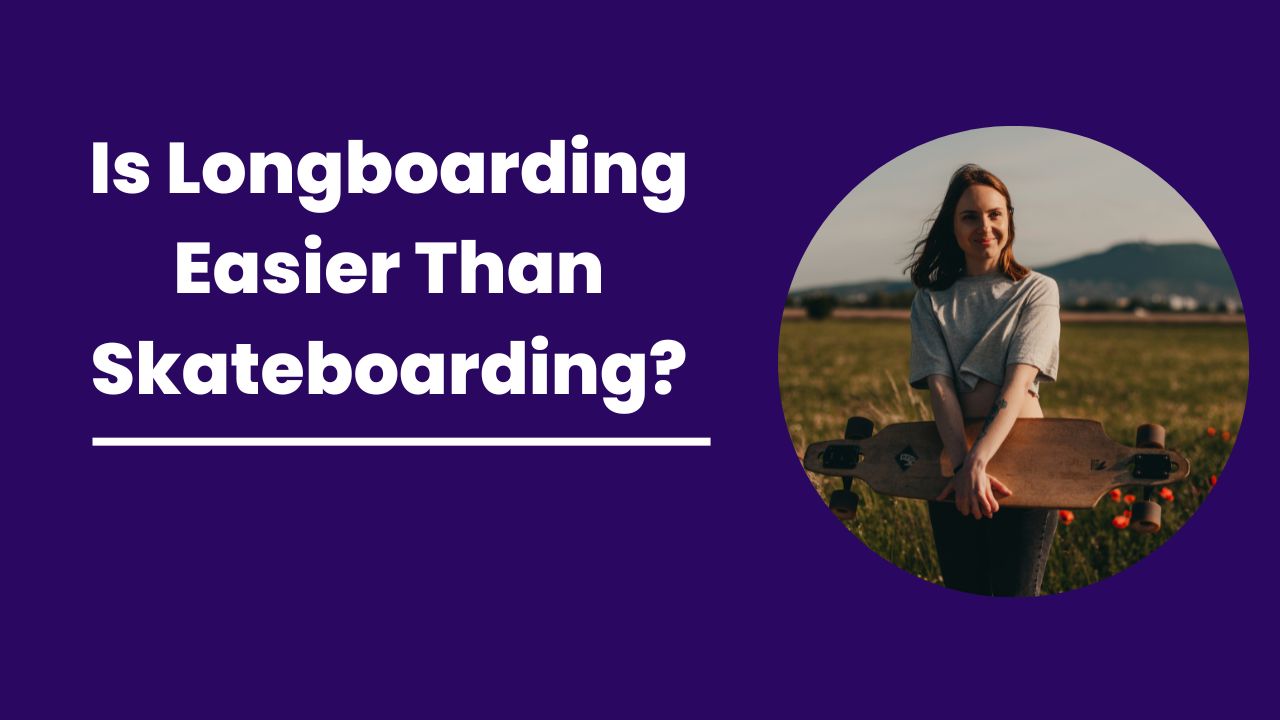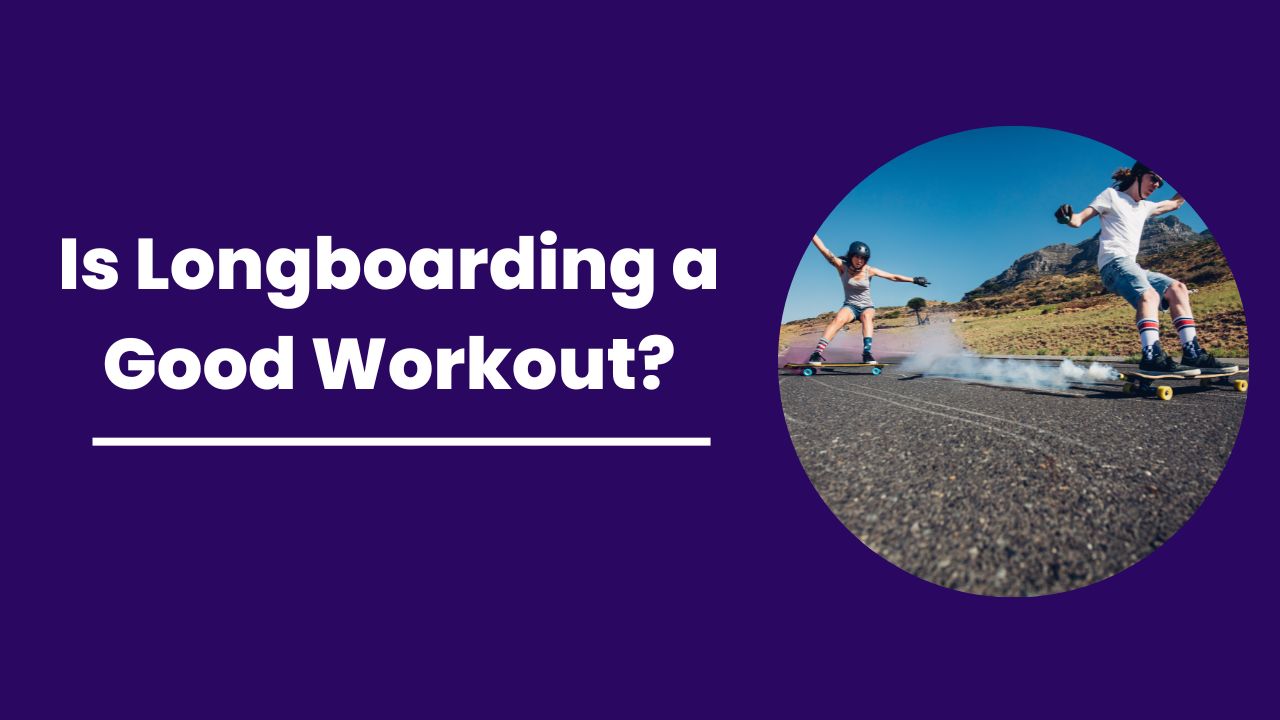Snowboarding is one of your favorite activities. Now you are at the peak of the summer season or traveling somewhere where snowboarding is not readily accessible from your place. Therefore, you are considering switching to longboarding as an alternative to snowboarding.
Nevertheless, you are also thinking that is snowboarding like longboarding!

Surely, board sports and other sports should share some similarities, right? While they generally use the same technique, some differences exist, which can sometimes make it challenging. This post will compare snowboarding vs. longboarding and highlight their differences, so it’s worth a closer look.
Contents
Is Snowboarding Like Longboarding?
In a nutshell, snowboarding is a form of longboarding closely similar to snowboarding in stance, grip, and turning. You use a similar type of balance and coordination when riding both of these board sports. It is most likely that if you are proficient in one of these activities, you will also be able to pick up the second experience quickly.
When it comes to longboard surfing, these two sports have some significant differences, especially when you consider this question. Basically, snowboarding differs from longboarding in that your feet are strapped to the board, and you are able to ride on only one side of the board.
The four longboarding wheels are connected to the ground and allow you to move your feet freely. Stopping is more challenging on a longboard than it is on a snowboard.
Here are some similarities between Snowboarding and longboarding:
- The balance and coordination required for snowboarding and longboarding are similar.
- Leg movements are required in both sports, such as leaning and turning.
- You’ll use the same muscles in your lower body and core to control both boards.
- To control the board, you will also lean either heelside or toeside.
- Compared with other recreational activities, they provide a similar sense of freedom and excitement.
Let us tell you some slight differences between these two board sports:
- Getting started with snowboarding requires quite a bit of equipment plus snowy mountains to ride on, whereas longboarding only needs your longboard and a smooth surface.
- A longboarder’s stance will typically differ from a snowboarder’s because longboarding is strapless, whereas snowboarding is strapped in.
- Snowboarding requires bindings to keep your feet secure, while longboarding doesn’t use bindings, and feet are free to stand on top of the board.
- When riding a longboard, you roll together with all 4 wheels in contact with the ground, while when riding a snowboard, you mostly ride along the edge of the board.
- Snowboarding is much easier to stand up and slide than longboarding during freeriding since snowboarding is characterized by riding on one edge.
- A hill is only necessary for freeride and downhill longboarding, but snowboarders can’t do much on flat terrain other than unstrapping and walking to an incline.
- Snowboarders will have much more success sliding down a big snow hill than sliding down a steep paved slope on a longboard.
It is possible to substitute longboarding for snowboarding when you are unable to do either and vice versa, making the two activities complementary to each other.
Read More:
Bottom Line – The Conclusion
Now you know your answer to your question, which is snowboarding, like longboarding. Both snowboarding and longboarding are awesome activities that you should try out. If you enjoy snowboarding, you should be able to learn longboarding quickly. There is such a slight difference between the two that you should not hesitate to try the other one without even thinking about it.
Frequently Asked Questions (FAQs):
1. Is snowboarding a lot like longboarding?
Traditionally, snowboarding and longboarding have a very symbiotic relationship where both sports complement each other and improve one another. As board sports, both require a similar level of coordination and balance.
However, they have differences, such as snowboards having a metal edge that makes it easier to control the snow, whereas skateboards do not. Additionally, snowboards use bindings and require specific equipment to get started, making them less accessible than longboards.
2. Does longboarding help snowboarding?
First of all, longboarding is a very effective way to keep your balance, improve your leg muscles, and strengthen your heel-toe connection. Furthermore, it also helps you develop a sense of muscle memory for the proper boarding stance and how to shift your weight when turning and carving.
In the same way as longboarding, snowboarding requires a lot of the same muscles. Consequently, if you’ve mastered longboarding, you’ll most likely be able to pick up snowboarding rapidly and become proficient in it very quickly.
3. Is snowboarding easier if you skateboard?
Skateboard is similar to a snowboard, so many people switch from skateboarding to snowboarding during the winter season. Those who have a good understanding of skateboarding know how to get to grips with movement.
This means even a novice snowboarder will have no problem getting on the slopes and enjoying some of the winter snow. Due to this reason, snowboarding is an excellent alternative for those who are unable to skateboard all year round and want to keep active.
4. What is the closest thing to snowboarding?
Surfing, wakeboarding, and free boarding are the closest things to snowboarding. Moreover, there are some electric skateboards that are also capable of carving like a snowboard, as well as some traditional longboard skateboards.
5. Does longboarding help with surfing?
Surfing and longboarding both require a very similar board-body technique, meaning that your body connects with the board when you perform certain movements. Surfers who are learning how to carve, turn, and transition on flat ground will find this particularly useful.
The skills you learn from longboarding will come in handy when you step on a surfboard. This includes keeping your feet apart and leaning on your back foot, and much more.

